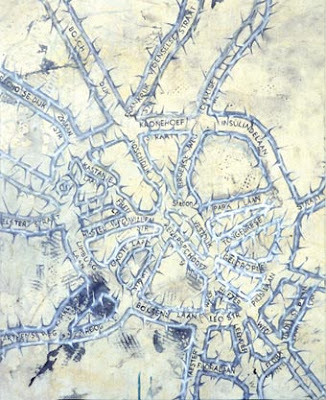For the Intentions unit, in which we have been asked to use visual research from our Summer Project, we have also been asked to write our own briefs, as well and come up with a concept for the project.
Most of my visual research involves natural themes, and fishing towns. I have been thinking of ways I can come up with a concept involving these themes, without it being all about fishing, or woods and trees (it will be difficult to continue research on these themes in Manchester!).
I found another Blogspot site called "Organic Matters" which provides floods of information and work by artists who use natural materials.
http://organicartmatters.blogspot.co.uk/
India Flint, for example, is a textiles artist who uses natural ways of creating colour:
India Flint
This piece has been created with natural dyes, sunlight, rust, mud and leaves. Although Dye isn't one of my disciplines, Flint's work is quite inspiring in terms of colour and experimentation.
Another artist I have looked at from "Organic Matters" is Joel Ferraris, who uses recycling to create some of his work.
Joel Ferraris
This piece is called, "Manicured Canyons and the Howling Winds of the Homesickness", and was made from used phone cards, "depicting a modern but crowded skyline". This is a really smart piece of work- I like it because its conceptual, and can influence recycling in other people's work, and perhaps mine!





















































